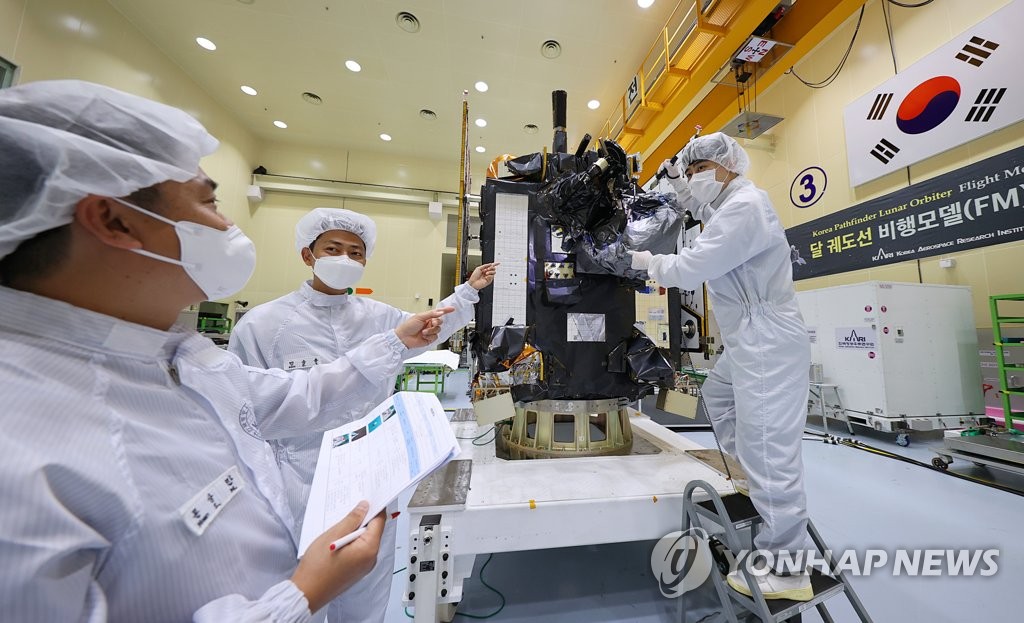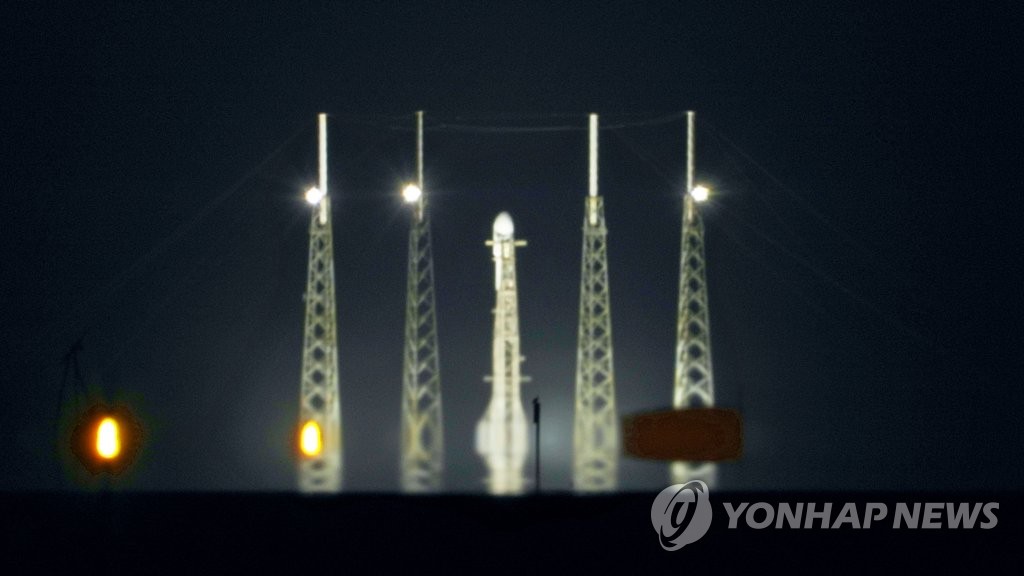 |
| ▲ This file photo provided by the Korea Aerospace Research Institute in Daejeon on June 6, 2022, shows aerospace engineers inspecting Danuri, South Korea's first lunar orbiter, scheduled to be launched into space from Cape Canaveral Space Force Station in Florida. (PHOTO NOT FOR SALE) |
 |
| ▲ This image provided by the South Korean science ministry on Aug. 4, 2022, shows a SpaceX Falcon 9 rocket carrying Danuri, a Korean lunar orbiter, erected on the launch pad at Cape Canaveral Space Force Station in the U.S. state of Florida. (PHOTO NOT FOR SALE) (Yonhap) |
lunar orbiter-launch
S. Korea's 1st lunar orbiter set for launch aboard SpaceX's Falcon 9 rocket
CAPE CANAVERAL, United States/SEOUL, Aug. 5 (Joint Press Corps-Yonhap) -- Engineers of South Korea's state-run Korea Aerospace Research Institute (KARI) were carrying out last-minute preparations Friday in the United States, just hours ahead of the launch of the country's first lunar orbiter.
The Korea Pathfinder Lunar Orbiter -- also known as Danuri -- is set to be launched on a SpaceX Falcon 9 rocket from Cape Canaveral Space Force Station in the U.S. state of Florida at 7:08 p.m. Thursday (U.S. Eastern Time), or 8:08 a.m. Friday (Korean time). The 678-kilogram spacecraft was transported to the U.S. station from South Korea last month.
According to KARI and the science ministry, Danuri is currently encapsulated inside the payload fairing of the Falcon 9 rocket. The rocket was raised vertically on the launch pad a day earlier.
The launch was initially scheduled for Wednesday but was postponed for two days due to a maintenance issue with the rocket.
Danuri marks South Korea's first space mission to travel beyond Earth's orbit. Its mission is to measure terrains, magnetic strengths, gamma rays and other traits of the lunar surface using six onboard instruments during its yearlong mission, starting in late December after traveling into lunar orbit for 4 1/2 months. It will also identify potential landing sites for future lunar missions.
The U.S. National Aeronautics and Space Administration (NASA) has been deeply involved in the South Korean mission after it and KARI signed a formal agreement to work together in December of 2016. NASA has shared experience in designing the missions and will provide access to the agency's Deep Space Network antennas around the globe to track the spacecraft.
(END)
(C) Yonhap News Agency. All Rights Reserved












![[가요소식] 존박, 8년만 단독 콘서트 '꿈처럼' 성료](https://korean-vibe.com/news/data/20251222/yna1065624915961730_125_thum.jpg)










